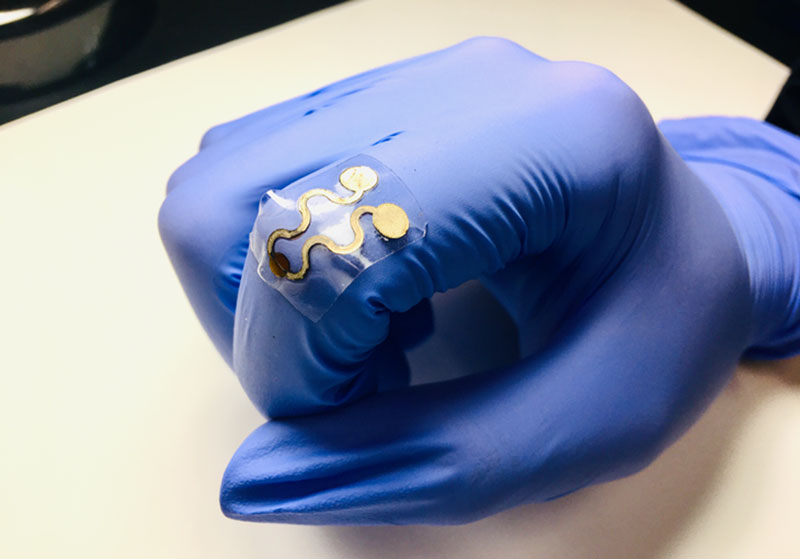Researchers at Penn State, Northeastern University and five universities in China, have developed a stretchable, wearable gas sensor for sensing gas in the environment.
Read more The Global Medical Sensors Market Is Poised To Grow Strong During 2018 – 2028 Period
The sensor combines a newly developed laser-induced graphene foam material with a unique form of molybdenum disulfide and reduced-graphene oxide nanocomposites. The researchers were interested in seeing how different morphologies, or shapes, of the gas-sensitive nanocomposites affect the sensitivity of the material to detecting nitrogen dioxide molecules at very low concentration. To change the morphology, they packed a container with very finely ground salt crystals.
Nitrogen dioxide is a noxious gas emitted by vehicles that can irritate the lungs at low concentrations and lead to disease and death at high concentrations.
When the researchers added molybdenum disulfide and reduced graphene oxide precursors to the canister, the nanocomposites formed structures in the small spaces between the salt crystals. They tried this with a variety of different salt sizes and tested the sensitivity on conventional interdigitated electrodes, as well as the newly developed laser-induced graphene platform. When the salt was removed by dissolving in water, the researchers determined that the smallest salt crystals enabled the most sensitive sensor.

“We have done the testing to 1 part per million and lower concentrations, which could be 10 times better than conventional design,” says Huanyu Larry Cheng, assistant professor of engineering science and mechanics and materials science and engineering. “This is a rather modest complexity compared to the best conventional technology which requires high-resolution lithography in a cleanroom.”
The researchers say the sensor has potential use in environmental monitoring or the healthcare industry.
Read more Aernos Nano-Gas Sensors to Power Wearables for Diabetics Now at CES 2019
“We think the stretchable nitrogen dioxide gas sensor may find applications in real-time environmental monitoring or the healthcare industry,” the team said.












